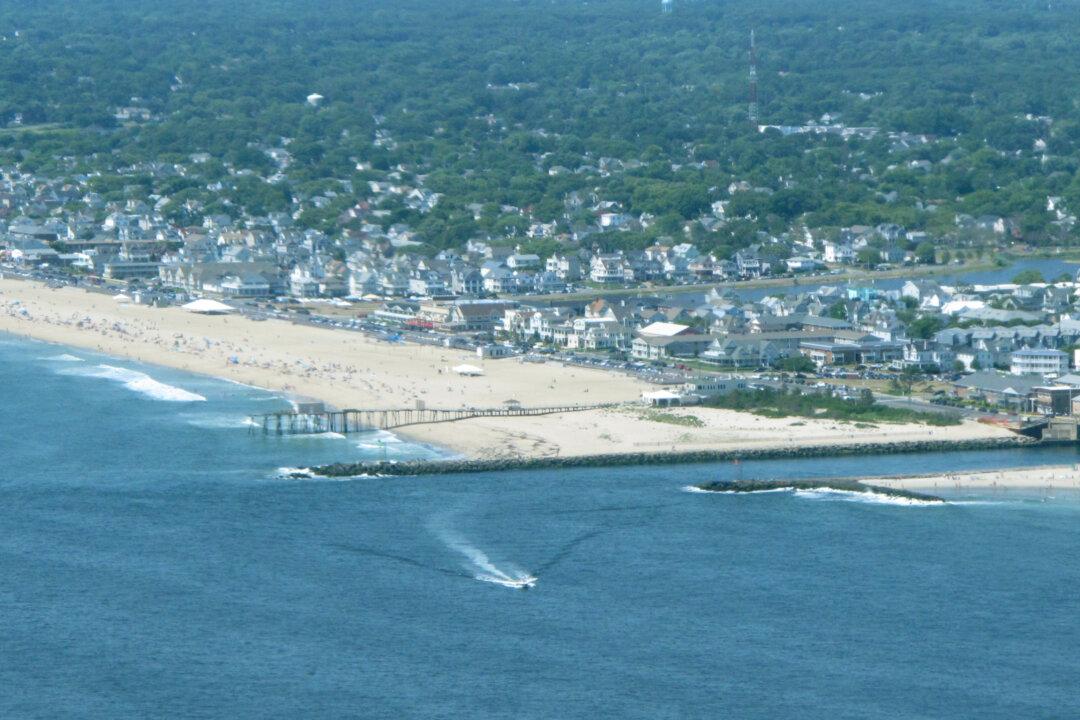OVER THE JERSEY SHORE—The image on a satellite photo snapped by NASA showed a big green arrow off the New Jersey coastline, starting in New York Harbor and spanning almost to Atlantic City.
Some blogs were already starting to write about it, calling it a large bloom of an algae species known as phytoplankton. Some just called it a giant blob.
Bruce Friedman, who heads the Bureau of Marine Water Monitoring and Standards for the state Department of Environmental Protection, wanted to see for himself. Two days after NASA published the image, Friedman and Dave Dorworth, a veteran pilot with the State Forest Fire Service, took to the air to look for it.
This year, in the second summer after Superstorm Sandy, when tourism at the shore needs to bounce back strongly, the DEP flights are more important than ever.
The men or their co-workers fly every day except Wednesday along the New Jersey shoreline as part of the DEP’s airborne pollution patrols. Their job is to look down at the water for anything that doesn’t belong there: trash, sewage, even naturally occurring phenomena like algae blooms, which can contain potentially toxic organisms.
The flights started back in the late 1980s when the Jersey shore was awash in trash and medical waste eventually traced to landfill operations in New York City.
Departing in a single-engine plane from Barnegat Township, deep in the New Jersey Pinelands, the plane climbs over the 1.1-million-acre protected forest reserve and heads for the coast. Banking to the left along Long Beach Island, Dorworth puts the plane in position to look for the bloom, which is nowhere to be found.
The worst pollution visible is a small thin line of floating trash off Long Branch. There are vast schools of menhaden—a crucial baitfish also known as mossbunker—darkening spots in the water near Sandy Hook, and in northern Monmouth.
Water Quality
“The water quality off New Jersey is pristine,” Friedman said. ““We collect 200-plus samples at beaches along the coast.”
The flights are supplemented by boat patrols that take water samples up and down the coast and check them in a laboratory for fecal coliform and other substances that can be harmful to swimmers in high concentrations. If they are detected, the DEP issues an advisory to swimmers. If a second sample the next day comes back high, a beach can be closed temporarily.
On the day Friedman was looking for the blob, the boats were also taking algae samples. And the bottom of his plane was equipped with a special sensor to measure chlorophyll, an indicator of algae growth.
“None of our observations, our chlorophyll sensor or samples indicated any phytoplankton at bloom concentrations,” he said. “We saw, at most, moderate assemblages of nontoxic algal species.”
That is precisely the kind of determination that these flights are designed to make possible.
From The Associated Press




